Last updated : April 7, 2025
If you are a DOT or non-DOT employer interested in establishing a drug free workplace policy, are you aware of the collection methods for mobile drug and alcohol testing? In this post, we’ll provide an overview of how we can perform drug and alcohol testing on your employees to help keep your workplace safe.
When working with USA Mobile Drug Testing of Northeast Ohio, a mobile drug testing specialist from our team will arrive on-site at your workplace to perform drug and/or alcohol tests using one of the following methods:
- Urine Testing
- Saliva Testing
- Hair Testing
- Alcohol Testing
- Nail & Sweat Patch Testing
Keep reading to learn more about the different types of drug and/or alcohol tests offered by USA Mobile Drug Testing of Northeast Ohio.
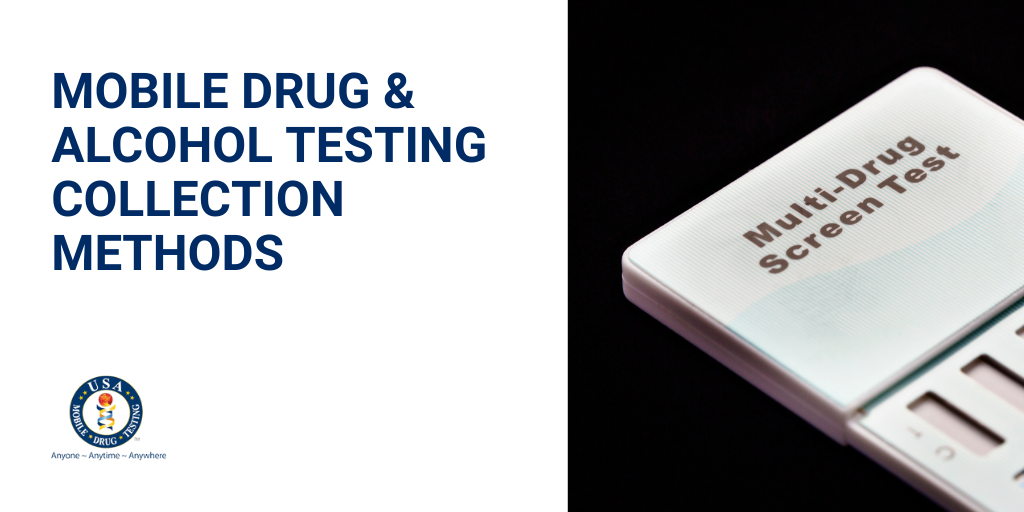
COLLECTION METHODS: URINE TESTING
Did you know that urine drug testing is the most widely used collection method? Most employers choose the 5-panel urine test, which is also commonly referred to as a “DOT 5-panel.” However, employers of the general workforce are free to use other test panels, such as a 10-panel drug screen.
Urine drug testing is the most popular collection method as it is a widely accepted method to test for recent drug use. Urine testing is great for maintaining a drug free workplace, as well as testing on a pre-employment, random, post-accident, or reasonable suspicion basis. Urine testing can be used to identify a wide range of illegal and prescription drugs, too.
Despite the rumors that many people still believe, it is extremely difficult to “cheat” a urine drug test. Drug metabolites cannot be “flushed” out by drinking extra fluids, taking diuretics, or using a detoxification product. Adding chemicals or diluting a specimen will cause it to be flagged as “inconclusive,” requiring a second test, which must then be taken under “direct observation” which means in plain view of the test administrator the entire time. Bringing clean urine provided by someone else may not be noticed by the test administrator, but the temperature will almost certainly be off, which will also cause it to be flagged.
In addition to drug metabolites, urine drug testing may also measure pH, creatinine, nitrates, temperature, and any adulterants that may have been added to the urine specimen. This prevents attempts to manipulate test results.
These types of urine tests are fast, easy, and they’re the only method allowed for DOT and other federally mandated tests. A urine test procedure is also the least expensive method to test for drug use.
It’s important to point out that while a positive urine test does not necessarily mean that an individual was under the influence of drugs at the time of the test, it has become the standard for evidence of “current use” for the U.S. Department of Labor.
Lastly, we mentioned that there are different types of urine tests, so please click here to read more about the “DOT 5-panel” test and click here to read about 10-panel tests which can only be used in a non-DOT environment.
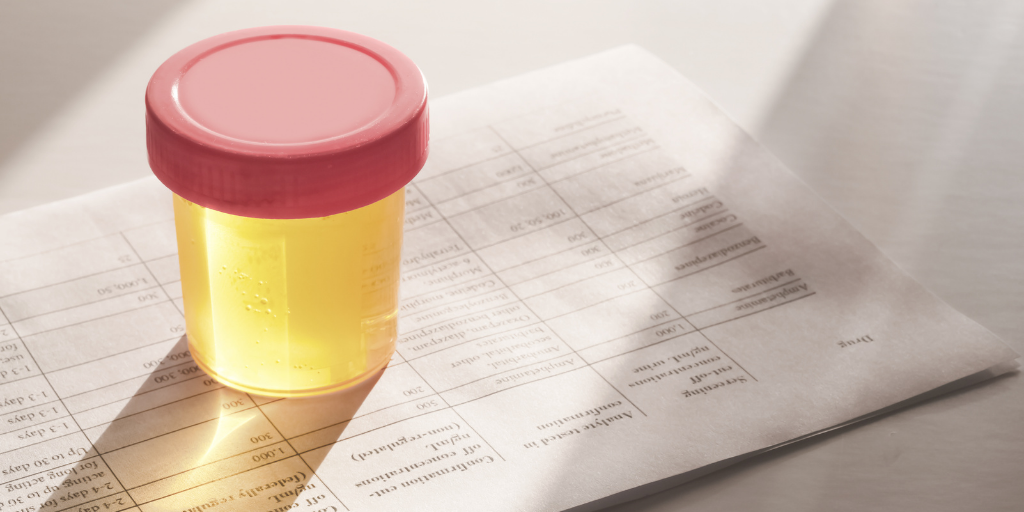
COLLECTION METHODS: SALIVA TESTING
Did you know that a saliva drug test, also known as an oral fluid drug test or mouth swab drug test, is becoming a more popular choice among collection methods for random drug testing? It is just as reliable as urine testing, too! Saliva testing is a great method for maintaining a drug free workplace, as well as testing on a pre-employment, random, post-accident, or reasonable suspicion basis.
This method of drug testing is as accurate as other methods. However, in some cases, it can be difficult to collect a sample due to reduced fluid caused by physiological factors, including drug use itself. Food and techniques used to stimulate the production of oral fluid can also affect the concentration of drugs.
Oral drug testing is still the preferred drug testing method when gender-neutral collection is needed. Also, it can identify alcohol and most common drugs, and saliva testing can be conducted under direct observation.
This type of drug testing is quick and easy, but is not allowed for DOT and other federally mandated tests, which require urine drug testing.
It’s important to note that while a positive oral drug test does not necessarily mean that an individual was under the influence of drugs at the time of the test, it has become the standard for evidence of “current use” for the U.S. Department of Labor.
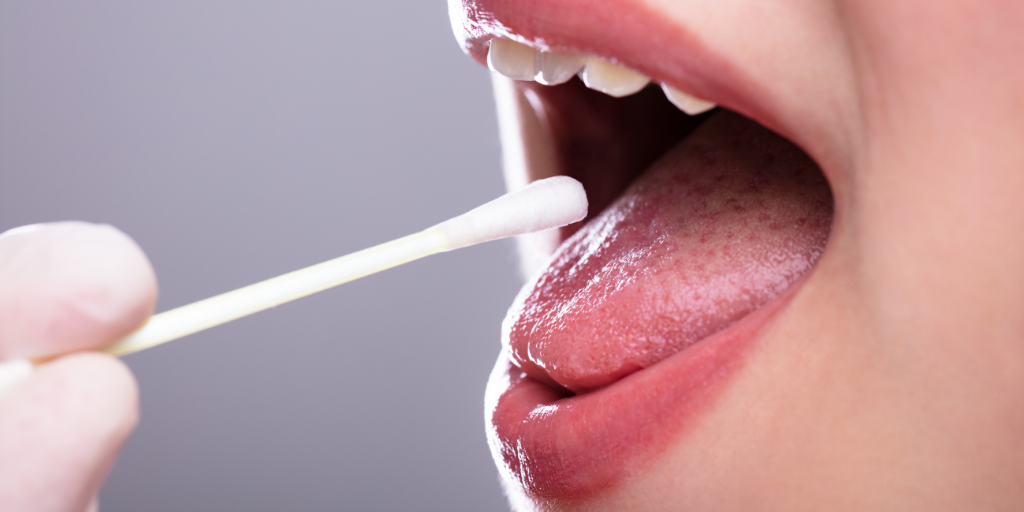
COLLECTION METHODS: HAIR TESTING
While hair testing is a less commonly requested testing method, do you know the advantage of a hair follicle drug test compared to the other testing collection methods? Hair testing provides approximately ninety days of drug use history versus urine and oral fluids, which provide approximately two to three days of “look-back.”
This longer “look-back” window can be a significant advantage and hair testing can be conducted using a 5-panel or 10-panel test.
In addition, the collection process for hair testing is quick (no waiting for a shy bladder), does not tie up a restroom, and is convenient if a gender-neutral testing environment is needed or desired. It is also nearly impossible to beat or cheat a hair test. The cost of a hair test is slightly more than urine and saliva testing, there is not an instant testing option for hair, and the lab analysis takes approximately three days. When conducting a hair test, only a small sample of hair is needed from the head, leg, arm, underarm or facial hair.
There is one extremely important factor that must be considered when deciding whether or not to use hair testing in your company’s drug free workplace program. The goal of a drug free workplace is to determine if someone could currently be under the influence (such as post-accident or reasonable suspicion testing). The same holds true when someone is randomly selected in the random drug testing program. Employing the use of hair testing in any of these scenarios could detect drug use that took place weeks or months ago, which may be irrelevant relative to the job. In the workplace, hair testing is best used, and recommended, for pre-employment testing. If your goal is not to hire a drug user, hair testing an applicant will help you achieve that goal.
Be sure to check the requirements of your workplace if your company is in a BWC state program, such as the Drug-Free Safety Program (which only allows urine testing).

COLLECTION METHODS: ALCOHOL TESTING
Did you know that there are two types of tests that test for alcohol? USAMDT of Northeast Ohio offers (1) Breath alcohol testing and (2) Oral fluids (saliva) testing to test for alcohol consumption.
Breath alcohol testing measures the Blood Alcohol Content (BAC) that may be present in a person’s system. Using a breathalyzer that conforms to DOT standards, an initial screening test is conducted. If the BAC is above the company’s limit for alcohol, our mobile drug testing specialist will wait fifteen minutes and conduct a second confirmation test. The fifteen-minute waiting period will eliminate the presence of mouthwash, for example, as that alcohol will dissipate during the waiting period. This is an extremely accurate process for measuring the BAC, and all USAMDT Breath Alcohol Technicians (BAT’s) are trained and certified to DOT standards through Lifeloc.
If a breathalyzer is not available, a quick alcohol saliva test can also be conducted for screening purposes. If the presence of alcohol exists, the saliva test should be followed up with a breathalyzer for confirmation (and is absolutely required by the DOT).
Finally, alcohol can be detected in a urine alcohol test. The difference with this type of drug screening test (referred to as ETG) is that this may show that alcohol had been consumed previously (up to a few days), and does not necessarily reflect current use or impairment.
When deciding whether or not to add alcohol use to your drug free workplace policy, here are some facts about alcohol in the workplace:
- Two specific kinds of drinking behavior significantly contribute to the level of work performance problems: drinking right before or during working hours (including drinking at lunch and at company functions), and heavy drinking the night before that causes hangovers during work the next day.
- Workers with alcohol problems were 2.7 times more likely than workers without drinking problems to have injury-related absences.
- A hospital emergency department study showed that 35 percent of patients with an occupational injury were at-risk drinkers.
- Analyses of workplace fatalities showed that at least 11% of the victims had been drinking.
- Large federal surveys show that 24% of workers report drinking during the workday at least once in the past year.
- One-fifth of workers and managers across a wide range of industries and company sizes reported that a coworker’s on- or off-the-job drinking jeopardized their own productivity and safety.
Due to these surprising statistics, testing for alcohol use in your employees can be extremely important to keep your workplace safe.
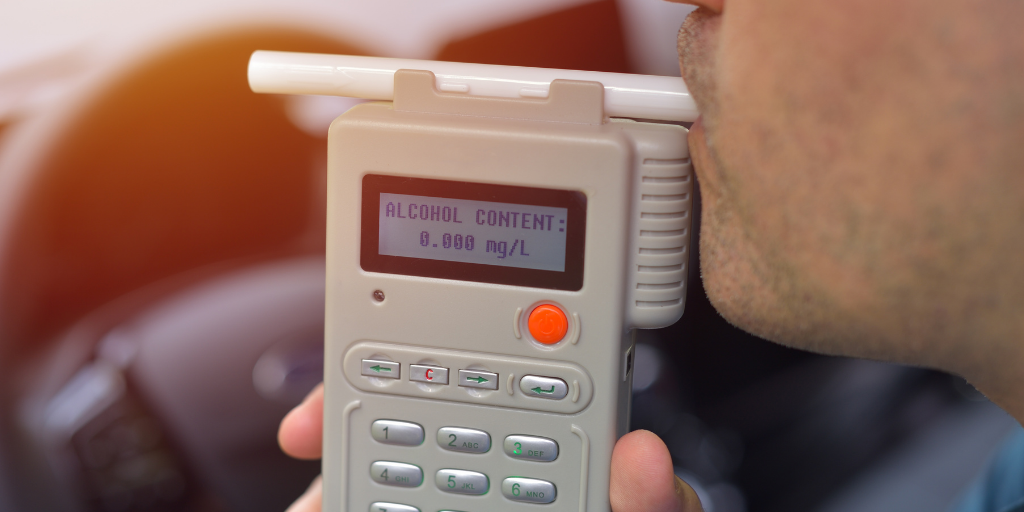
NAIL & SWEAT PATCH TESTING
Contact us here to learn more about our newest offerings!
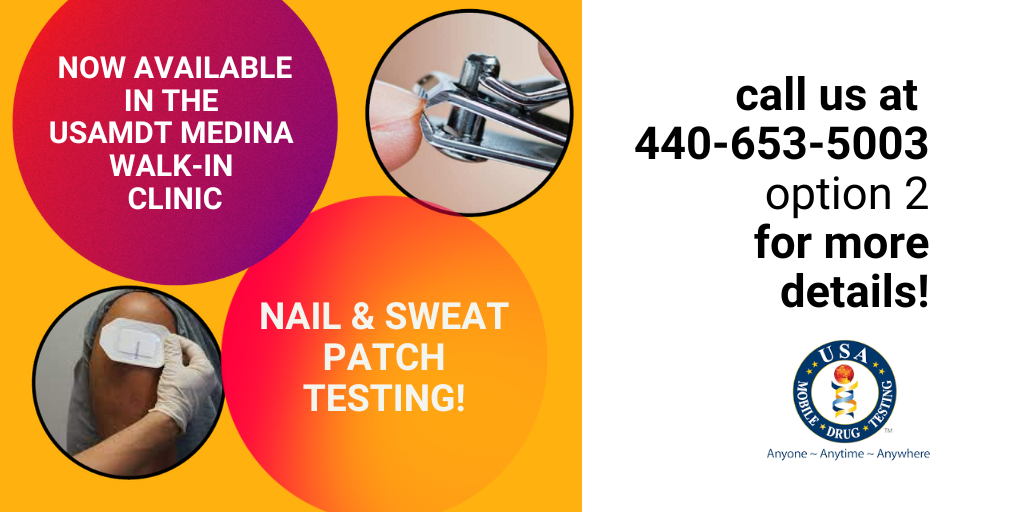
CONCLUSION
The impact of alcoholism and drug dependence in the workplace often focuses on four major issues:
- Premature death/fatal accidents
- Injuries/accident rates
- Absenteeism/extra sick leave
- Loss of production
To avoid these issues at your company, there are many effective methods for testing for drugs and/or alcohol that we outlined in this post. If you have questions about setting up your drug free workplace policy with USA Mobile Drug Testing of Northeast Ohio, please call 440-653-5003 or contact us here.
